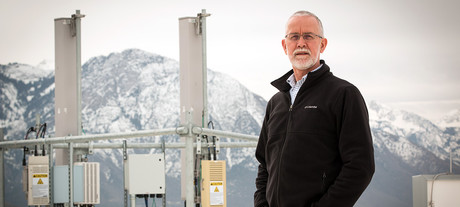Going beyond 5G for smarter cities

To meet the communications needs of tomorrow’s cities, researchers are already working on what will come after 5G.
The US National Science Foundation (NSF) has reached an important milestone in its Platforms for Advanced Wireless Research (PAWR) effort, with the deployment of the first two PAWR research platforms.
The platforms, in Salt Lake City and New York City, will power research motivated by real-world challenges on experimental, next-generation wireless testbeds at the scale of cities and communities. The goal is to advance the state of the art for wireless technology beyond today’s 4G, LTE and emerging 5G capabilities.
The platforms “will enable cutting-edge research in living laboratories across the country, which is a new and important milestone for advancing wireless capabilities,,” said Jim Kurose, head of the Computer and Information Science and Engineering directorate at NSF.
PAWR is funded by the NSF and a Wireless Industry Consortium of 30 networking companies and associations. The PAWR Project Office (PPO) is managing the US$100 million public-private partnership to deploy and manage four city-scale research testbeds.
The PAWR platforms will enable early-stage research that will push forward robust, new wireless devices, techniques, protocols and services. In addition, these research platforms will allow promising technologies to move quickly to market, provide hands-on practical training to a new generation of students, increase job opportunities and support overall US economic vitality.

The PPO is run through US Ignite and Northeastern University, and works closely with NSF and the PAWR Industry Consortium to manage the public-private partnership. NSF has committed US$50 million towards the research platforms over the next seven years and expects to announce the development and deployment of additional platforms next year.
First two testbeds
The Salt Lake City testbed is known as POWDER-RENEW (Platform for Open Wireless Data-driven Experimental Research with Massive MIMO Capabilities) and is being led by the University of Utah and Rice University.
A collaboration with municipal and state leadership from Salt Lake City and Utah, POWDER-RENEW will create an advanced wireless research platform that will cover six square kilometres of the University of Utah campus, three square kilometres of downtown Salt Lake City and a three-kilometre corridor in between, reaching a potential population of 40,000 people.
While it will enable wireless research across many technical areas, the research platform will offer unique and specialised capabilities for dynamic spectrum sharing and advanced wireless antenna technologies.
“Mobile and wireless is where it’s at,” said University of Utah School of Computing Associate Professor Kobus Van der Merwe, who is leading the team that will build and operate the Salt Lake City platform.
“We have 5G coming. We have multiple radio technologies and different applications coming. All of those things need platforms to experiment on, to prototype on, to explore.”

The second testbed is in New York City. Known as COSMOS (Cloud Enhanced Open Software Defined Mobile Wireless Testbed for City-Scale Deployment), it is being led by Rutgers University, Columbia University and New York University.
COSMOS is partnering with New York City, Silicon Harlem, City College of New York, University of Arizona and IBM to bring this advanced wireless testbed to life in New York City. The testbed will cover 2.5 square kilometres of a densely populated neighbourhood in West Harlem.
The technical focus of the COSMOS platform is on ultra-high-bandwidth and low-latency wireless communications, with tightly coupled edge computing, a type of cloud computing enabling data processing at the edge of the network.
COSMOS will pursue millimeter-wave radiocommunications and dynamic optical switching technologies. This new wireless research platform will allow for experimentation at a scale that could not be achieved previously, thereby enabling new services and applications to benefit the entire community.
Expected benefits
The PAWR Industry Consortium, consisting of equipment vendors, device manufacturers and wireless carriers, has committed US$50 million in cash and in-kind contributions that include equipment, expertise and human resources.
Benefits from this research may include:
- enabling first responders and surgeons to share real-time data during emergencies;
- training entry-level workers via immersive, virtual reality systems;
- providing seamless communication between vehicles and roadway infrastructure to reduce traffic congestion.
NSF’s investment in the PAWR program is part of a broader strategy to support smart cities and communities. These research platforms will help to shape the future of wireless networks that will serve as the foundation for critical applications and services in neighbourhoods and municipalities.
Please follow us and share on Twitter and Facebook. You can also subscribe for FREE to our weekly newsletter and bimonthly magazine.
RFUANZ report: setting the frequency for success in 2025
Last year brought a lot of internal change for RFUANZ, but the association has hit the ground...
ARCIA update: an extended event calendar for 2025
With the addition of Tasmanian events and a conference in Adelaide in September, 2025 will see...
ARCIA update: plans for 2025
ARCIA will be holding a mixture of workshop, conference and networking events in 2025, in the...





